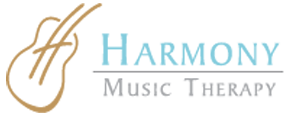How Neurologic Music Therapy Principles Improve my Improvisational Music Therapy Technique
I’ve written before about how much I love both the Neurologic Music Therapy approach as well as the Improvisational Music Therapy model. I feel that both are incredibly valuable and in no way mutually exclusive. In fact, I believe that understanding how music impacts the brain can be a strong and effective guide for improvisation in a music therapy session.
Rhythm, I believe, is the most basic element of music that can either make or break a particular intervention with a client. I’ve found that understanding the impact of rhythm on the brain has changed the nature of my improvisation with many clients. I’d like to outline a few principles that I’ve found most beneficial in how to use rhythm effectively.
- Understand Entrainment: Steady and predictable rhythm can have a significant impact on the brain through the principle of entrainment. Entrainment occurs when the brain begins to anticipate what is coming and basically throws the rest of the body into gears as it anticipates the “next step”. Entrainment is key when working toward any type of motor output, and can influence cognitive processes as well. When utilizing entrainment for therapeutic outcomes (such as improved speech or motor responses) it is essential that the rhythm be steady and based on the client’s natural responses.
- Keep the Rhythm Going: I have discovered the importance of keeping the rhythm going when using the music to facilitate a speech or motor response. I used to stop the music to give space for a client to respond, but now I keep the steady rhythm going by tapping my guitar, snapping, or providing some other kind of steady auditory cue in the improvisation. I’ve noticed a huge difference in client responses as I keep that music stimulus going. No longer are their brains “shocked” by a sudden stop, but they are propelled forward with a slight auditory change but a continuance of rhythm. With this said, there are some clients who benefit from the sudden stopping of the musical stimulus as that kicks their brain into gear. It is so important to assess the client’s responses to these different types of stimuli and to find what works best for their particular neurology.
- Give Spatial, Temporal, and Force Cues within the improvisation for certain responses: I feel like I did this fairly intuitively before my neurological training, but I now know what to call them and why they are important. For those who are unfamiliar with these terms, a spatial cue is basically showing the size of a cued movement by the range of notes used (a big movement would utilize a range of notes on the keyboard from low to high or high to low depending on the movement, or a small movement would just use a small range of notes). Temporal cues are just what they sound like: steady timing cues in the rhythm you’re looking for. Force cues are utilizing the dynamics to cue the strength of the movement or vocal response (louder music=more muscle effort, softer music=less effort required). I utilize these cues now in my improvisations when clients are jumping, running, skipping, etc. It helps them organize their bodies within the experience, and I can see exactly how and why the music helps them find greater success in body organization and awareness.
- Be consistently aware of how the music facilitates the Functionality of the goal: This is something all music therapists should do anyway, but I think that we may get stuck in patterns and just using songs for the sake of the song (I’ve even heard of using a song in a themed session just because the title of the song relates…but the song itself has nothing to do with facilitating progress toward goals…). I am dedicated to the idea that every single thing I do in the session (especially improvisation) must have a particular goal that I am addressing. That goal must be functional, and I should be able to say how what I am doing facilitates the functional development of that goal.
Of course these ideas I’ve outlined here are more focused on understanding neurology and the impact of music on functional outcome, but the idea is to take these principles and apply them to improvisation. I personally LOVE to improvise music in my sessions and to encourage creative self expression from my clients. As I do this, however, these principles of neurology and the impact of music on the brain guide my improvisation. This creates a beautiful marriage when these two worlds, Improvisational Music Therapy and Neurologic Music Therapy, become ONE.
